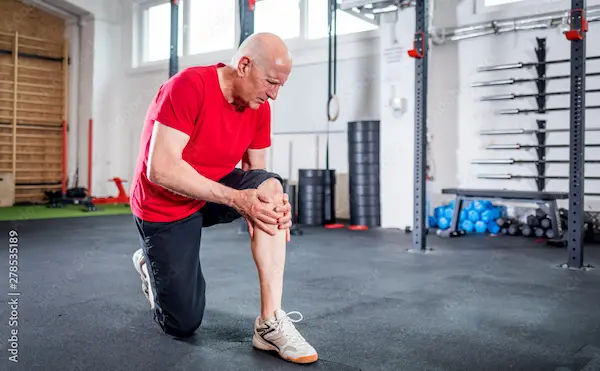Your Ultimate Guide to Joint Health & Pain Relief
Discover everything you need to know about joint health and pain relief. Learn causes, early warning signs, prevention strategies, natural remedies, and when to seek medical help.


Introduction
Every step, bend, and stretch is a marvel of biological engineering made possible by your joints. These intricate hinges are what grant us the freedom of movement, allowing us to dance, play, and simply navigate our daily lives. Yet, we often take them for granted—until they start to ache, stiffen, or swell. With over 350 million people affected worldwide, arthritis is a leading cause of pain and disability, making joint health awareness more critical than ever. This comprehensive guide is designed to empower you with knowledge. We'll explore the different types of arthritis, uncover the secrets to maintaining healthy joints, identify early warning signs, and separate fact from fiction. Whether you're looking to prevent future issues or manage existing discomfort, this article will provide actionable strategies to help you move through life with greater ease and less pain.
Understanding Your Joints: The Body's Master Hinges
What Exactly is a Joint?
A joint is simply the connection between two or more bones in your body. But this connection is far from simple. Think of them as sophisticated hinges and shock absorbers. Complex joints like the knee or hip are surrounded by a capsule filled with synovial fluid, a slippery substance that lubricates the joint, much like oil in a car engine. The ends of the bones are capped with cartilage, a smooth, flexible tissue that acts as a cushion, preventing bone-on-bone contact and allowing for frictionless movement. Ligaments, tendons, and muscles work in concert to provide stability and power. Maintaining the health of all these components is the very essence of joint health.
The Culprits Behind Joint Pain and Stiffness
When this sophisticated system is compromised, pain and dysfunction follow. The causes are numerous, but arthritis is the most common villain.
The Role of Osteoarthritis (The "Wear-and-Tear" Arthritis)
Osteoarthritis (OA) is the most prevalent form of arthritis. It occurs when the protective cartilage that cushions the ends of your bones wears down over time. This degenerative joint health issue is like the tread on a tyre gradually wearing thin, leading to pain, stiffness, and a loss of flexibility. While ageing is a primary risk factor, previous joint injury, obesity, and genetics also play significant roles.
The Impact of Rheumatoid Arthritis (An Autoimmune Condition)
Unlike OA, Rheumatoid Arthritis (RA) is an autoimmune disorder. This means the body's immune system mistakenly attacks its own tissues, primarily the synovium—the lining of the membranes that surround the joints. This attack causes painful swelling that can eventually lead to bone erosion and joint deformity. RA often affects joints symmetrically (e.g., both wrists or both knees) and is accompanied by systemic symptoms like fatigue and fever.
Other Common Causes: Injury, Gout, and Lupus
Other conditions can severely impact joint health. Acute injuries from sports or accidents can damage cartilage and ligaments (e.g., an ACL tear). Gout is a form of arthritis characterised by sudden, severe attacks of pain and redness in the joints, often the big toe, due to a build-up of uric acid crystals. Systemic autoimmune diseases like Lupus can also cause widespread joint inflammation and pain.
Early Warning Signs: Is Your Body Telling You Something?
Listening to your body is the first step in proactive joint health care. Persistent symptoms are your body's distress signals and should not be ignored.
Don't Ignore These Symptoms of Unhealthy Joints
- Pain: Aching, soreness, or sharp pain during or after movement.
- Stiffness: Difficulty moving the joint, especially first thing in the morning or after a period of inactivity.
- Swelling: Visible inflammation or puffiness around the joint.
- Redness and Warmth: The skin around the joint may be red and warm to the touch.
- Decreased Range of Motion: Inability to fully bend or straighten the joint.
- A Grating Sensation: Hearing or feeling a popping, cracking, or grinding sound (crepitus).
If you experience any of these symptoms of rheumatoid arthritis or osteoarthritis consistently for more than two weeks, it is crucial to seek a professional opinion. If your condition is causing significant discomfort, consult a doctor online with Apollo24|7 for further evaluation and a personalised management plan.
Proactive Strategies: How to Maintain Healthy Joints for Life
Fuel for Function: The Best Diet for Joint Health
You are what you eat, and your joints are no exception. An anti-inflammatory diet can be a powerful tool for reducing pain and supporting cartilage health.
Anti-Inflammatory Foods to Embrace
- Omega-3 Fatty Acids: Found in fatty fish (salmon, mackerel, sardines), walnuts, and chia seeds, omega-3s are renowned for their potent inflammation-fighting properties.
- Colourful Fruits and Vegetables: Berries, leafy greens, and brightly coloured veggies are packed with antioxidants that combat oxidative stress, a key player in joint deterioration.
- Spices: Turmeric (containing curcumin) and ginger have powerful natural anti-inflammatory effects.
- Nuts and Seeds: Almonds and flaxseeds provide vitamin E and omega-3s, supporting the immune system and fighting inflammation.
Foods to Limit or Avoid
- Processed Foods: High in refined carbohydrates, unhealthy fats, and additives, these can promote inflammation.
- Sugar-Sweetened Beverages: Linked to increased inflammation and, in men, a higher risk of RA.
- Excessive Red Meat and Fried Foods: These can contain high levels of advanced glycation end (AGE) products, which stimulate inflammation.
Move It or Lose It: Joint-Friendly Exercises
Contrary to instinct, movement is medicine for aching joints. It strengthens the supporting muscles, improves flexibility, and helps lubricate the joint.
Low-Impact Activities: Swimming, Cycling, and Yoga
These activities get your heart rate up and build strength without pounding your joints. Swimming is particularly excellent as the water's buoyancy supports your body weight. Yoga and Pilates are fantastic for improving flexibility, balance, and core strength, which all contribute to better joint health.
Consult an Orthopaedic doctor for the best advice
Strength Training: Building a Support System for Your Joints
Strong muscles act like natural braces for your joints. Focus on exercises that strengthen the quadriceps (front of the thigh) to support the knees and the core and glutes to support the hips and back. Resistance bands and bodyweight exercises like squats and lunges (with proper form) are highly effective.
Weight Management: The Single Best Thing You Can Do for Your Knees and Hips
Every extra kilogram of body weight places about four times the stress on your knees. Losing just 10 pounds can reduce the load on your knees by 40 pounds with every step. Weight management is not about aesthetics; it's one of the most effective natural remedies for joint inflammation and pain prevention, particularly for weight-bearing joints.
Beyond Diet and Exercise: Other Ways to Support Your Joints
The Truth About Joint Health Supplements
The supplement aisle is full of promises for joint health. The most common are:
- Glucosamine and Chondroitin: These are building blocks of cartilage. Study results are mixed, but some people find significant relief, particularly for knee osteoarthritis.
- Turmeric/Curcumin: A potent anti-inflammatory, with growing evidence supporting its use for reducing arthritis pain.
- Omega-3 Supplements: A good alternative for those who don't eat fatty fish regularly.
It's essential to talk to your doctor before starting any new supplement regimen, as they can interact with medications.
The Importance of Proper Posture and Ergonomics
Slouching at your desk or hunching over your phone places uneven strain on your joints, particularly in the neck, spine, and hips. Ergonomic chairs, standing desks, and taking regular breaks to stretch can make a world of difference. Practise good posture by keeping your ears, shoulders, and hips in a straight line.
Debunking Common Myths About Joint Pain and Arthritis
- Myth: "Cracking your knuckles gives you arthritis."
Fact: The sound is from gas bubbles popping in the synovial fluid. It may annoy others, but it doesn't cause arthritis. - Myth: "Arthritis is only an old person's disease."
Fact: While risk increases with age, RA can begin at any age, and even children can get juvenile idiopathic arthritis. - Myth: "If you have joint pain, you should avoid all exercise."
Fact: As outlined above, the right kind of exercise is crucial for managing pain and improving function.
When to Seek Professional Help: You Don't Have to Suffer in Silence
While lifestyle changes are powerful, they are not a substitute for professional medical advice. You should consult a doctor if you experience:
- Joint pain that is severe, persistent, or worsening.
- Significant swelling, redness, or warmth around the joint.
- Inability to bear weight on the joint.
- Symptoms that interfere with your sleep or daily activities.
A doctor can provide an accurate diagnosis (which may involve blood tests or imaging) and create a comprehensive treatment plan, which could include physiotherapy, medications, or other interventions. Apollo24|7 offers convenient home collection for tests like CRP (C-reactive protein) or RA factor, which can help in diagnosing inflammatory arthritis from the comfort of your home.
Conclusion
Remember that joint health is fundamental to your quality of life. It empowers you to engage fully in the activities you love, from playing with your grandchildren to pursuing your favourite hobbies. While conditions like arthritis are common, they are not an inevitable sentence to a life of pain and immobility. By embracing a proactive approach—through intelligent nutrition, consistent and gentle movement, weight management, and timely medical consultation—you can take control of your musculoskeletal well-being. You have the power to protect your joints, manage discomfort, and continue moving with confidence and grace. Start today by incorporating one positive change, and build a stronger foundation for a more active, pain-free tomorrow.
Consult a Orthopaedic doctor for the best advice
Consult a Orthopaedic doctor for the best advice

Dr. Naveen Palla
Orthopaedician
11 Years • MS
Chinagadila
Apollo Hospitals Health City Unit, Chinagadila
(75+ Patients)

Dr. Chetan Kabra
Orthopaedician
10 Years • M.S. in Ortho, MCh Ortho
Guwahati
Apollo Hospitals G S Road, Guwahati
(75+ Patients)

Dr Hemanth Praveen Malla
Orthopaedician
8 Years • MBBS ( ANDHRA MEDICAL COLLEGE) Internship(King George Hospital) DNB ORTHOPEDICS( DDH – NBE) FIJR ( ZIMMER) FIJR (NTRUHS- BIRRDS) MNAMS MBBS,DNB (ORTHOPEDIC),FIJR(BIRRDS),FIJR( ROBOTICS),MNAMS . ORTHOPEDIC AND ROBOTIC JOINT REPLACEMENT SURGEON
Chinagadila
Apollo Hospitals Health City Unit, Chinagadila

Dr. Sharif Dudekula
Orthopaedician
12 Years • MBBS, MS Orthopaedics ( PGIMER , Chandigarh ) Former Orthopaedic Surgeon ( AIIMS , New Delhi )
Mumbai
Apollo Hospitals CBD Belapur, Mumbai

Dr. Yash Gulati
Orthopaedician
35 Years • MBBS, MS(Ortho), Dip Sports Med., MCh (Ortho), Padma Shri Award
Delhi
Apollo Hospitals Indraprastha, Delhi
(50+ Patients)
Consult an Orthopaedic doctor for the best advice

Dr. Naveen Palla
Orthopaedician
11 Years • MS
Chinagadila
Apollo Hospitals Health City Unit, Chinagadila
(75+ Patients)

Dr. Chetan Kabra
Orthopaedician
10 Years • M.S. in Ortho, MCh Ortho
Guwahati
Apollo Hospitals G S Road, Guwahati
(75+ Patients)

Dr Hemanth Praveen Malla
Orthopaedician
8 Years • MBBS ( ANDHRA MEDICAL COLLEGE) Internship(King George Hospital) DNB ORTHOPEDICS( DDH – NBE) FIJR ( ZIMMER) FIJR (NTRUHS- BIRRDS) MNAMS MBBS,DNB (ORTHOPEDIC),FIJR(BIRRDS),FIJR( ROBOTICS),MNAMS . ORTHOPEDIC AND ROBOTIC JOINT REPLACEMENT SURGEON
Chinagadila
Apollo Hospitals Health City Unit, Chinagadila

Dr. Sharif Dudekula
Orthopaedician
12 Years • MBBS, MS Orthopaedics ( PGIMER , Chandigarh ) Former Orthopaedic Surgeon ( AIIMS , New Delhi )
Mumbai
Apollo Hospitals CBD Belapur, Mumbai

Dr. Yash Gulati
Orthopaedician
35 Years • MBBS, MS(Ortho), Dip Sports Med., MCh (Ortho), Padma Shri Award
Delhi
Apollo Hospitals Indraprastha, Delhi
(50+ Patients)
More articles from Joint Pain
Frequently Asked Questions
What is the main difference between osteoarthritis and rheumatoid arthritis?
Osteoarthritis is primarily a degenerative 'wear-and-tear' condition where joint cartilage breaks down. Rheumatoid arthritis is an autoimmune disease where the body's immune system attacks the joint lining, causing inflammation. OA is often asymmetric, while RA typically affects the same joints on both sides of the body.
Are there any proven natural remedies for joint inflammation?
Yes, several natural approaches have evidence supporting them. These include adopting an anti-inflammatory diet (rich in omega-3s and turmeric), maintaining a healthy weight, practising low-impact exercises like swimming or yoga, and using heat/cold therapy for temporary pain relief.
I have knee pain. What are the best exercises for me?
The best exercise for knee pain is low-impact. Focus on strengthening the quadriceps and hamstrings to support the knee. Excellent choices include swimming, water aerobics, stationary cycling, leg raises, and gentle yoga. Avoid high-impact activities like running and jumping.
How does weight loss help with joint pain?
Weight loss dramatically reduces the load on weight-bearing joints like the hips and knees. Every pound lost reduces four pounds of pressure on the knees. This decrease in stress can significantly reduce pain, slow the progression of arthritis, and improve mobility.
When should I seriously consider seeing a doctor about my joint pain?
You should consult a doctor if your joint pain is severe, persistent (lasting more than two weeks), accompanied by significant swelling or redness, prevents you from carrying out daily activities, or is followed by a fever. You can quickly consult a specialist online via Apollo24|7 to discuss your symptoms and determine the next steps.




